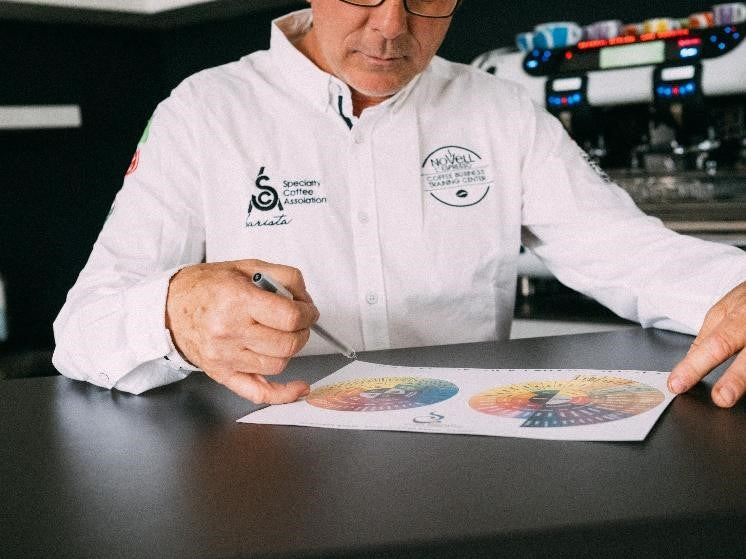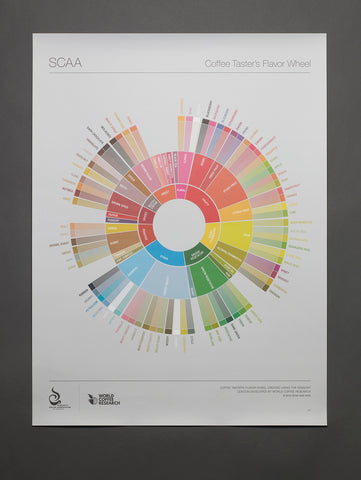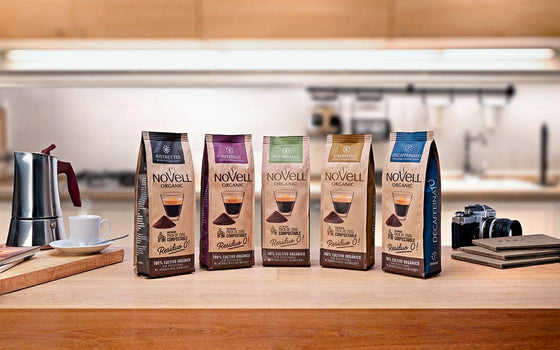
The SCA (Specialty Coffee Association) Coffee Taster Wheel of Flavors is one of the most emblematic resources in the coffee industry. It is a key tool for tasting laboratories around the world, and present in most coffee training courses. In coffee, it is possible to perceive more than 900 notes and textures that would allow us to evaluate its characteristics in a tasting process. In the Wheel of Flavors, only the most representative ones appear.
Originally published in 1995, the wheel has been the industry standard for more than two decades. It was reworked in 2016, becoming the largest and most collaborative pieces of research ever conducted on coffee flavors. The final design, a kaleidoscopic image of coffee flavours, was the work of One Darnley Road, a creative agency based in East London.
For a correct reading of the wheel of descriptors, it must be done from the centre to the outside. In the central part are the more general descriptors, and as we move away from the centre they become more specific. Another one of the most particular characteristics of the Wheel of Flavors are its colors, whose chromatic intensity serves to indicate the weight of the molecules they represent.

For example, orange for sweet, wine color for spices, pink-fuchsia for floral, etc.
Each colour and hue was carefully selected with the intention that it best represent the corresponding flavor.
The three basic groups of olfactory and taste sensations that appear on the wheel are: enzymatic, caramelization and dry distillation.
The taster can stop anywhere on the wheel, but the more outward he/she works, the more specific and detailed the description of the coffee will be.
Not all plant-based milks are created equal when it comes to complementing your morning brew. Let's help you make the right choice for you...

